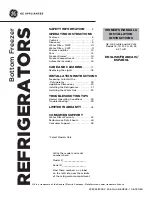
Using the refrigerator
HDC-160, HDC-190, HDC-220
24
6.2
Connecting the refrigerator
Connecting to a battery
The refrigerator can be operated with a 12 V to 24 V DC voltage supply.
To avoid voltage loss and therefore a drop in performance, the
cable should be kept as short as possible and should not be
interrupted if this is possible.
For this reason avoid additional switches, plugs or power strips.
➤
Determine the required cross section of the cable in relation to the cable
length according to
4
, page 4.
Key for
4
, page 4
Caution!
Make sure that the polarity is correct.
z
Before starting up the device for the first time, check whether the
operating voltage and the battery voltage correspond (see type plate).
➤
Connect the refrigerator
– As directly as possible to the pole of the battery or
– To a plug socket which is fused with at least 15 A (at 12 V) or 7.5 A
(at 24 V).
Caution!
Disconnect the cooling device and other power consuming
devices from the battery before connecting the battery to a quick
charging device.
Overvoltage can damage the electronics of the device.
For safety reasons the refrigerator is equipped with an electronic system
to prevent the polarity being reversed. This protects the refrigerator against
reversed polarity when connecting to a battery and against short circuiting.
To protect the battery, the refrigerator switches off automatically if the voltage
is insufficient (see table below).
Co-ordinate axis
Meaning
Unit
l
Cable length
m
∅
Cable cross section
mm²
_hdc160-190-220.book Seite 24 Freitag, 4. Juli 2008 4:51 16










































